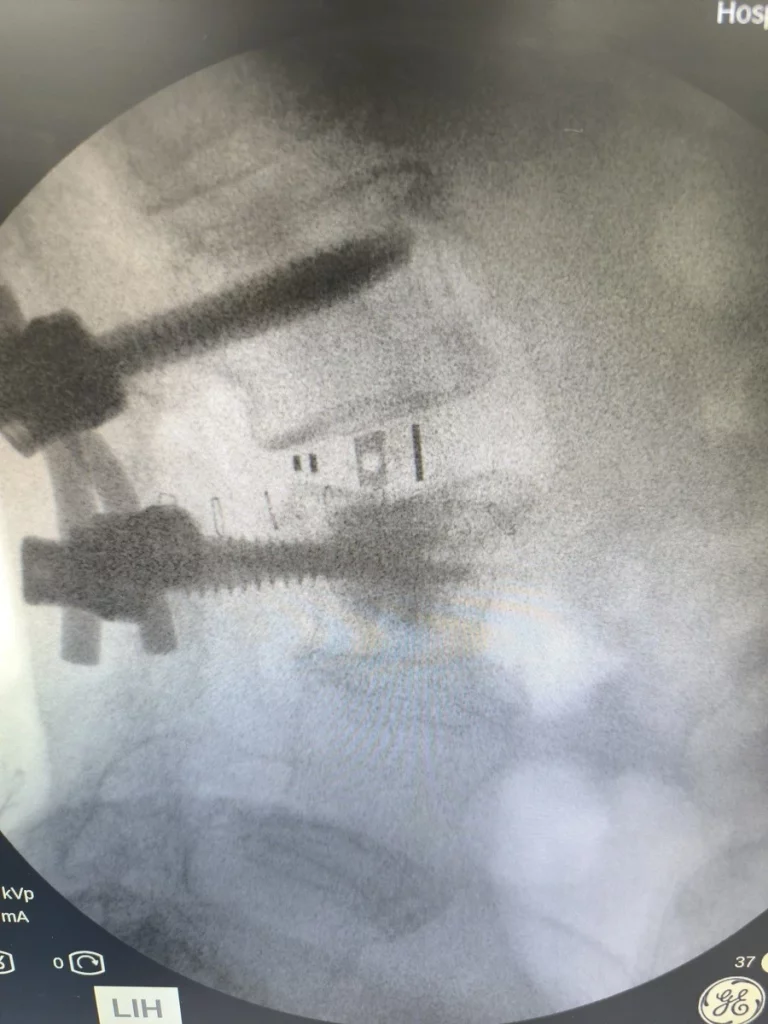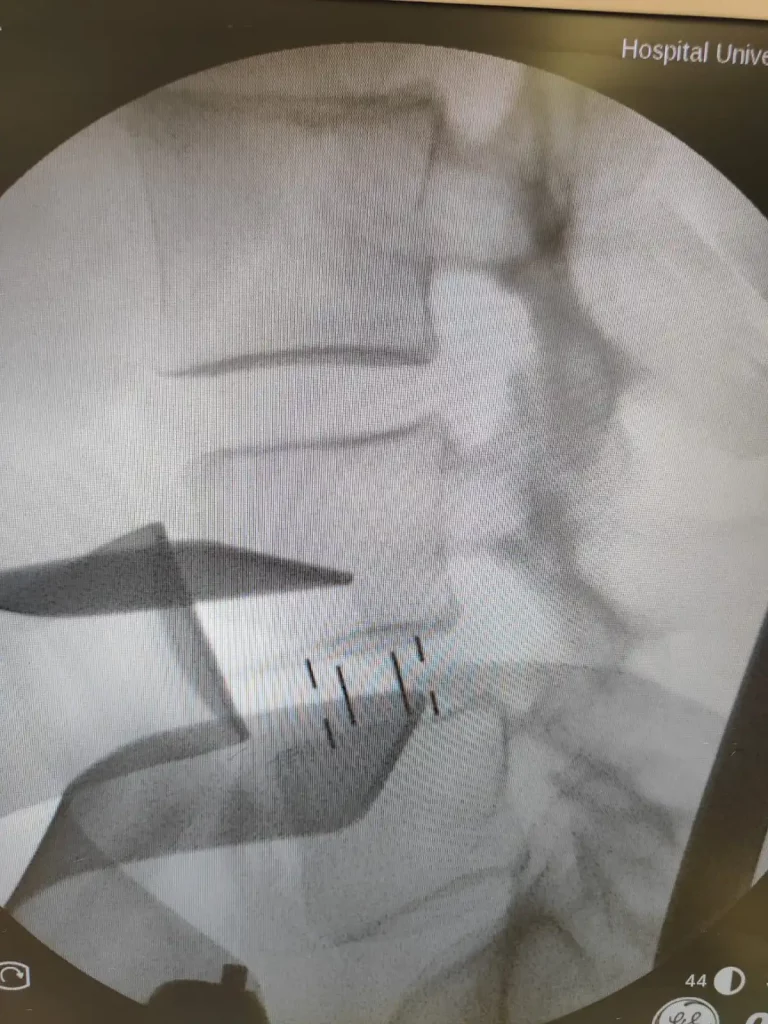Oblique Lumbar Interbody Fusion (OLIF): A Minimally Invasive Breakthrough in Spine Surgery
Oblique Lumbar Interbody Fusion (OLIF) stands as one of the most significant advancements in spine surgery in recent decades. This minimally invasive technique allows surgeons to treat complex lumbar spine conditions with faster recovery times and minimal tissue disruption.
At Complex Spine Institute, we apply OLIF using an integrated approach that combines cutting-edge technology, multidisciplinary assessment, and internationally recognized surgical expertise. Every procedure is tailored to minimize pain, shorten recovery time, and preserve the patient’s mobility.

What is OLIF?
OLIF is a surgical procedure that accesses the intervertebral disc through an oblique anterolateral approach, avoiding the posterior back muscles. The surgeon works within a natural anatomical corridor between the psoas muscle and major blood vessels, allowing for the insertion of an implant that restores disc height and facilitates spinal fusion.
This indirect access significantly reduces blood loss, infection risk, and muscle damage—resulting in less postoperative pain and much faster functional recovery.
OLIF technique demonstration
In this presentation for the Spanish Society of Neurosurgery and Spine Surgery, delivered by Dr. Augusto Covaro, I delve into the key steps of the OLIF technique:
Common Indications
OLIF is especially recommended for patients with:
- Degenerative spondylolisthesis
- Lumbar scoliosis or spinal deformities
- Disc collapse or loss of intervertebral height
- Foraminal stenosis causing nerve root compression
- Failed back surgery syndrome after previous interventions
In our experience, OLIF has been pivotal in restoring function for patients who had lost hope after multiple prior surgeries.
Why Choose OLIF Over Traditional Fusion Techniques?
Compared to traditional posterior approaches such as PLIF, OLIF offers clear clinical advantages:
- Less invasive approach that avoids disrupting back muscles
- Reduced blood loss and shorter operating time
- Faster recovery with early mobilization
- Effective correction of spinal deformities like scoliosis
- Ideal for revision surgeries after failed previous procedures
We’ve witnessed patients with years of chronic pain return to normal life within weeks following a well-indicated OLIF procedure.
What Technology Do We Use at Complex Spine Institute?
We perform OLIF with the assistance of:
- 3D surgical navigation
- Intraoperative CT imaging
- Robotic positioning systems
- Real-time visualization
This level of precision is crucial when operating near vital vascular structures. Every case is thoroughly evaluated by our multidisciplinary team, led by Dr. Vicenç Gilete (neurosurgeon) and Dr. Augusto Covaro (orthopedic spine surgeon), who bring over 40 years of combined expertise.

Recovery After OLIF Surgery
Thanks to the minimal tissue trauma, the postoperative recovery is significantly improved:
- Hospital discharge within 24–48 hours
- Early ambulation (same or next day)
- Return to work in under 4 weeks
- Minimal need for pain medications
- Small scars with excellent cosmetic tolerance
The combination of minimally invasive techniques and precision technology has dramatically changed the outlook for patients with complex spinal conditions.
Is OLIF Suitable for Everyone?
While OLIF offers many advantages, it may not be suitable for all patients. Relative contraindications include:
- Anatomical variations in iliac vessel positioning
- Complex prior abdominal surgeries
- Extensive adhesions from previous conditions
This is why we perform detailed imaging studies (MRI, CT, vascular assessments if needed) and discuss each case in a medical board to determine the most appropriate surgical strategy.
How to Know if OLIF is Right for You?
If you suffer from chronic back pain, functional limitations, scoliosis, or have undergone unsuccessful spine surgery, OLIF could be the solution you’ve been looking for. Getting started is simple:
- We offer both in-person and online consultations
- We can review your existing imaging and medical history
- We provide multilingual support and personalized care
Schedule a consultation today —no commitment required—and let us assess your case with expertise, empathy, and professionalism.